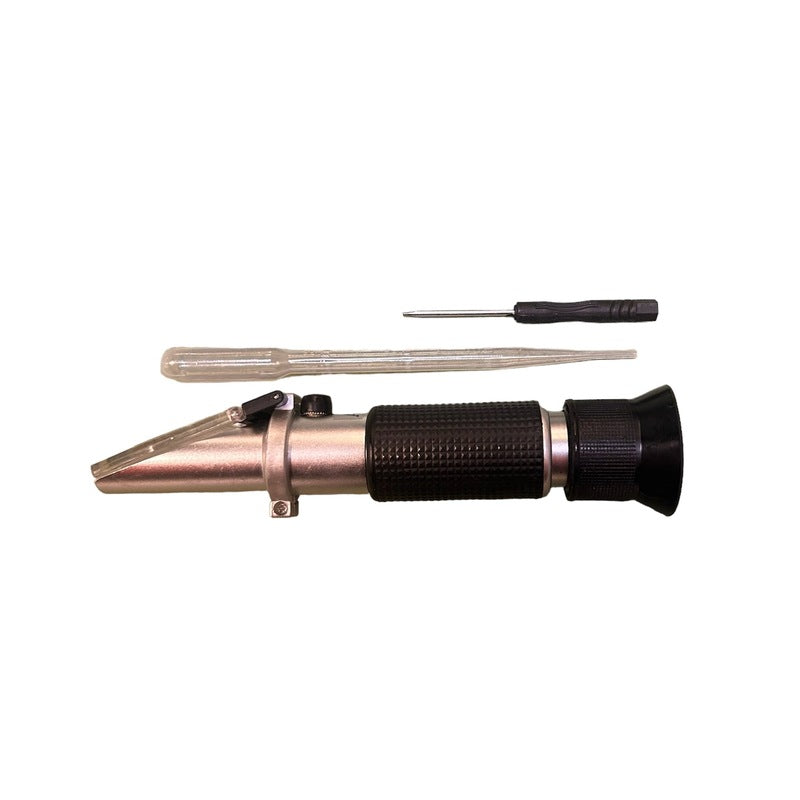Refractometer
Refractometer
Couldn't load pickup availability
The refractometer is an adaptable tool utilized by dairy farmers and calf-care specialists to evaluate critical aspects of calf rearing. One key application involves assessing colostrum quality to ensure its suitability for initial feeding, a common use of the refractometer. Each colostrum sample is tested to measure its IgG content.
Before each use, calibrate the refractometer and ensure it is free from visible dirt and contaminants like manure. Also, check for any glass cracks or breaks. Here's how to use a Brix refractometer to test colostrum quality:
Begin by calibrating the refractometer. Place 2-3 drops of distilled water on the glass surface.
Lower the cover over the sample, ensuring the water spreads evenly without air bubbles or dry spots.
Wait 15 seconds for the sample to adjust to room temperature before taking a calibration reading.
Hold the refractometer up to natural light and look down the eyepiece. Avoid fluorescent light sources.
Observe the circular field with graduations down the center. The scale should read zero where light and dark areas meet. Adjust if necessary using the calibration screw.
Wipe the surface clean with a soft cloth.
Once dry, place a few drops of colostrum onto the glass surface and repeat the process.
Take a quality reading for the colostrum.
After obtaining the reading, clean the slide and glass for future use.
Colostrum with a reading above 22% is of high quality and can be used or stored, while that below 22% should be discarded.
Share


